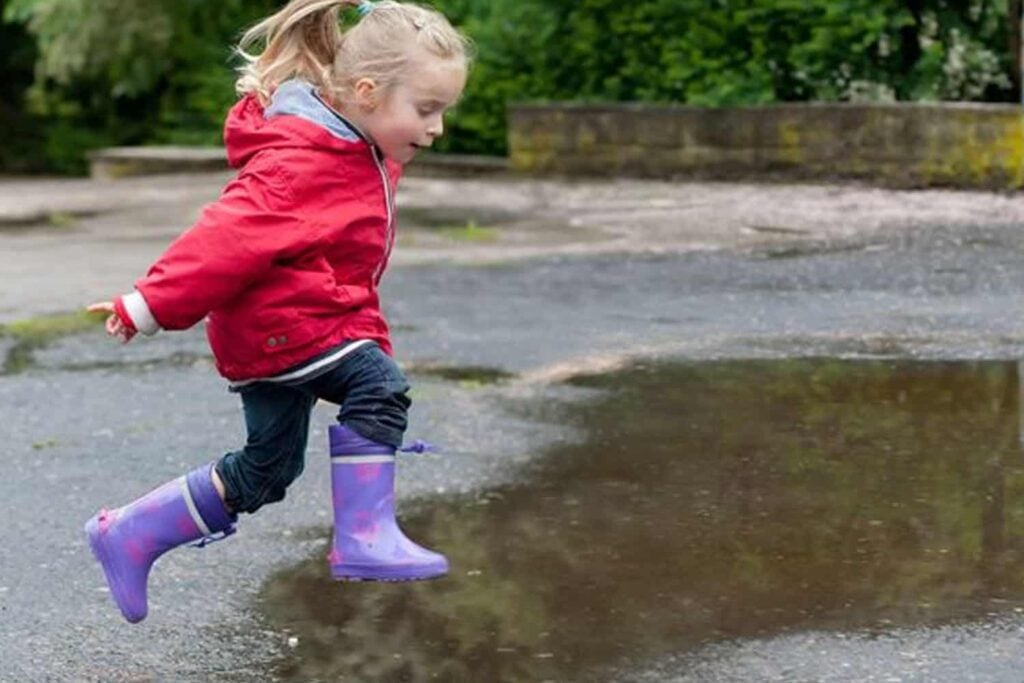By Dr Sarah Alexander.
June 11, 2020.
The ECE sector has not been immune to the financial impact of the Covid-19 crisis, but little is known about how it has been affected.
Why is this important to know? Because the wellbeing of the early childhood sector is of concern – the provision of childcare is pivotal to assisting the NZ economy to get back on its feet following the COVID-19 crisis.
Already before the lockdown there were signs that the ECE market was weakening. The market had become over-supplied and investor interest was declining. As well as this, the growth in participation previously brought about by government policies had slowed. Ministry of Education statistics showed a decline in the child attendance rate from 65.7% in 2017 to 63.9% in 2019.
I have talked with and sought the opinions of people from different services around the country on the immediate and longer-term financial outlook, and made use also of data from a quick snapshot survey by ChildForum of 200 service providers representing 371 licensed operations. Note this was undertaken from 29th May to the first week of June, which was after the May 14th Budget announcements of government funding increases.
My aim in writing this piece is to make sure people have an assessment of the true and comparative pressures on ECE services.
As we come out of the Covid-19 crisis the real work begins of ensuring the financial sustainability of services.
The insight provided here can inform the Ministry of Education and other government agencies of the groups of ECE services most at risk. It can also inform the ministry of the kind of support that would make a difference to the situations services now find themselves in.
Everyone involved in ECE will find it interesting to read what services are doing, and may pick up ideas and strategies that could prove useful for their service/ s.
Overall Conclusion about the Financial Impact
Most services are likely to be okay and some will be better off. But some are at risk of permanent closure due to the COVID-19 crisis should their situation not improve sufficiently.
Government Support Has Been Critical to Maintaining ECE Service Provision
Every ECE continued to be paid funding per hour per child at pre-lockdown levels, during Alert Levels 4 – 2, with no clawback in funding for non-attendance and lower attendance by children. This has supported the survival of every ECE service around the country and reduced the potential negative impact.
What has also gone in favour of the survival of ECE services is that all were eligible to claim the wage subsidy, if they wished, if they experienced the required drop in income, since none are part of the state sector (except for Te Kura, the correspondence school). For example, the Northland Kindergarten Association received payment of $84,000.00 and commercial operator Kindercare Ltd received $7,462,010.40 under the COVID-19 wage subsidy scheme. Service providers said things like:
“We were able to claim the wage subsidy and hold back on paying GST until July when funding arrives.”
“We have had no families leave and returned to 100% invoicing of fees after only 10 weeks. Payment of the WINZ subsidy as well as the MSD subsidy has meant that it looks like we will be in a good position.”
Business Choices Affected Service Provider Financial Positions
Every shock brings winners and losers. Some winners make their gains at the expense of others.
Most ECE service providers accepted that they along with every business operator in NZ needed to make some sacrifice. However, there were instances of some who appeared to maintain or improve their financial position at the expense of others. For example, one private operation with a small number of centres in Wellington and Auckland whose target market is professional and high-income earning parents, received full funding for operational costs from the Ministry of Education and more than $200,000 under the COVID-19 wage subsidy scheme. It cut teacher pay by 20% and teachers were given rosters to ensure they put their hours in working at home and then at centres during Alert Level 3 while remaining closed to any child that may have attended. The owner plans to expand by opening another centre in Wellington later this year.
The Ministry of Education encouraged service providers to consider parents and not charge fees during the period of lockdown and until they re-opened. Some services asked parents to pay a ‘holding fee’ so they still had revenue from parents coming in.
Insurance promoted to some services as providing cover against losses in the case of pandemic has soured their originally positive outlook. Note that early on insurance was in fact reported in mainstream media as being a saviour for ECE services that had it. Service providers that had pandemic insurance now say things like:
“We didn’t quite meet the Wage Subsidy criteria of a 30% loss so it looks as though we are having to pay back the approx $65,000 that was given to us. We had – what we thought was comprehensive insurance that we paid an extra $500/annum for to cover wages for staff in case of some event that meant we couldn’t operate and they at this stage are fronting up with approx. $15,000 total (we thought we would be entitled to up to $150,000). This means we are having to draw on the total amount in our contingency fund that has taken us 5 years to build and we will be left with nothing in this.”
“Insurance company is not paying out to cover wages as they should have, and we haven’t been able to keep the wage subsidy because of the insurance company’s woefully inadequate pay.”
What is happening now?
No change or improved financial outlook
There are services that are busy – they have had all or most children return and are receiving lots of new enquiries. Parents are back at work. Parents, also, are keen to drop their child off and get some much needed ‘me’ time to themselves.
Services that have a more positive financial outlook are those that doing well in retaining children, and those that are attracting new enrolments to fill any vacancies left by withdrawals and children starting school.
Services with a positive outlook tend to be those that have lower staffing and other costs (e.g. may be mortgage and loan free), and / or have financial reserves to draw on, or are part of a larger entity such as a university or hospital.
‘Free kindergartens’ mostly have no change in financial outlook as a result of COVID-19. Being paid by the Ministry of Education on the highest funding rate table has helped. It has also helped that free kindergartens tend to have a lower proportion of parents who are working full-time and a higher proportion of parents who are using just 20 or up to 30 hours per week and therefore are less likely to reduce their hours.
Signs are emerging that home-based ECE may have a rosier future than before the COVID-19 crisis. Some home-based services are optimistic or are beginning to see an increase in demand from parents who have become aware of the increased health risk to young children of centre-based care. One service provider for example said: “especially for under 2s children in home-based, we are seeing an increase in numbers. Parents want their child to attend a smaller group environment.”
Slightly or significantly worsened financial outlook
The financial outlook is worse mostly for education and care centres. Particularly:
- centres in low socio-economic areas who were already financially struggling before Covid,
- language immersion centres,
- small rural town centres that have a fixed client base and have lost children due to parents losing jobs, etc. and no way of replacing these children,
- centres in tourist areas serving parents predominately working in the tourist industry,
- centres that have a lot of parents in an industry, such as hospitality, who have lost their jobs, and
- centres serving immigrants and people on working visas.
Centres have parents who are not using all the hours that their child was enrolled for pre-Covid. This can be because they have lost their job or they are working from home with no daily commuting to work needed. Centres are finding that in some cases children are returning and doing just 20 hours or less if the child qualifies for the 20 Hours ECE subsidy. This could be because parents are looking to save on childcare costs to make up for wage cuts, loss of overtime and bonuses, and to service mortgages, etc.
Some quotes:
- Some families are cutting their hours or opting to go to kindy which is free according to them. We have reduced the fees of several families.
- Lost existing and potential children due to parents losing jobs, new families whose children were confirmed to start in April were due to arrive from overseas now cannot come.
- Families are going to have to move from our location to get a job. With the huge decline in overseas tourists, my families are having to close their businesses. We face closure within 12 months if numbers don’t increase.
- Being in the inner-city, parents who worked in offices in the city were a large part of our market. Many are now working from home part or full time. Some lost their jobs. Job prospects the for inner city will be less. We also got children of foreign students coming to our centre which will not be happening for some time again.
- Not all the children are returning this year, as some parents who have lost work prefer to look after their children at home, plus we have lost quite a few children to primary school. Hardly have any new enrolments.
- We are a small service and have had a few tamariki start school. The odd few have not returned due to tangihanga/relocation/reluctance to return to groups, which with a small roll the financial impact on us is profound.
- A lot more cleaning during and especially at the end of the day, which is cutting in on our non-contact time and tamariki engagement. The only way to get any of that time back is to hire someone else part-time which is added costs that we can’t afford. We hoped we would be recognised in any funding rate increases but sadly our teacher-led Puna Reo missed out. The government is so good at applying plasters here and there but always those that are trying to make a real difference and honour the treaty partnership get trod on. It’s bull.
What does the future look like?
The future does not look good at this moment for services that have lost teachers and are not able to replace them either because they can’t afford to pay the wages or because of a lack of qualified teachers applying for jobs in ECE services that are not kindergartens fully funded for professional teacher salaries.
The government introduced a funding band for 100% qualified teachers in Budget 2020 but this looks unlikely to have any immediate impact on staffing decisions.
The future of services that have made teachers redundant is also in jeopardy because as one service explained, this is a double edged sword as it impacts on their capacity to enrol more children: “We have had to make a teacher redundant; any staffing changes negatively impact on both current and future child enrolments.”
Future funding payments received from the Ministry of Education that are based on children’s actual attendance, as opposed to attendance levels pre-lockdown, will see some services financially going backwards at an increased rate than they may already be experiencing if their income from parent fees has decreased.
Some services that have full rolls or expect to return soon to full enrolments, are needing temporary financial help such as through loans and bank overdrafts.
Home-based services that have newly trained educators are looking forward to increased income from being funded at the quality rate.
Some services that are doing okay now are only in this situation because they have emergency savings and are drawing on their savings. But should they not be able to rebuild their contingency fund they would be at high risk in the (hopefully unlikely) event of another such crisis as we have just been experiencing.
In many centres there isn’t the money available for ‘discretionary’ spending to support staff. Some centres are making decisions to reduce staff non-contact hours, not to re-engage relievers and non-permanent staff, not to fund meetings outside of usual work hours, to spend nothing on professional development and look for ways this can be done at no cost, and not give staff pay rises or additional benefits this year.









